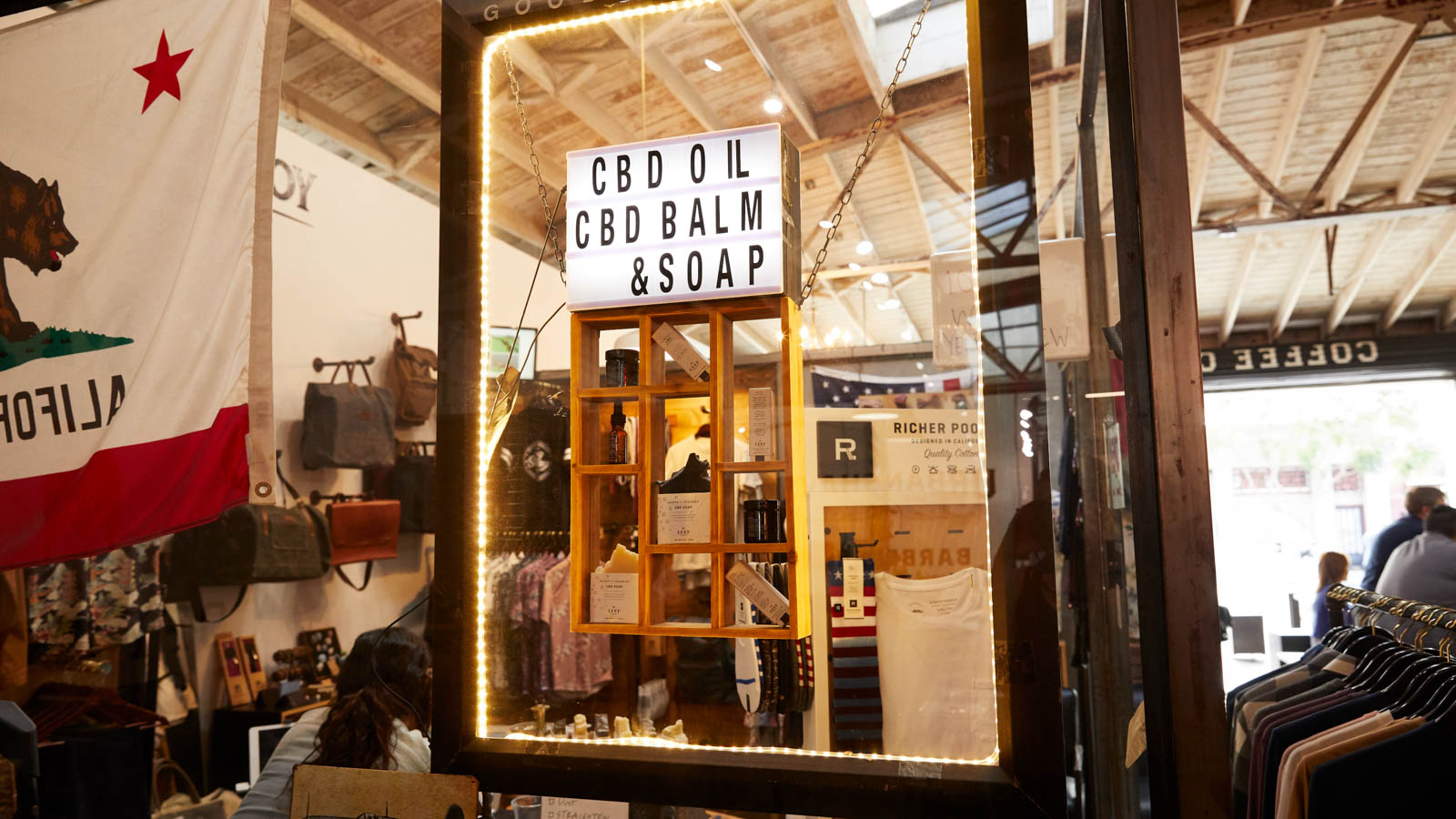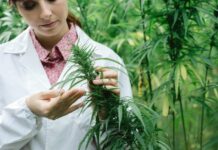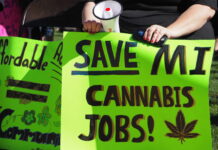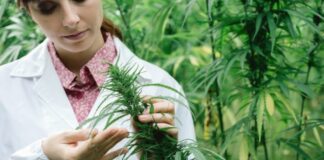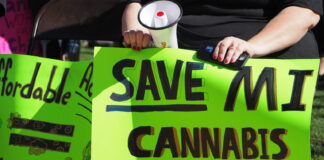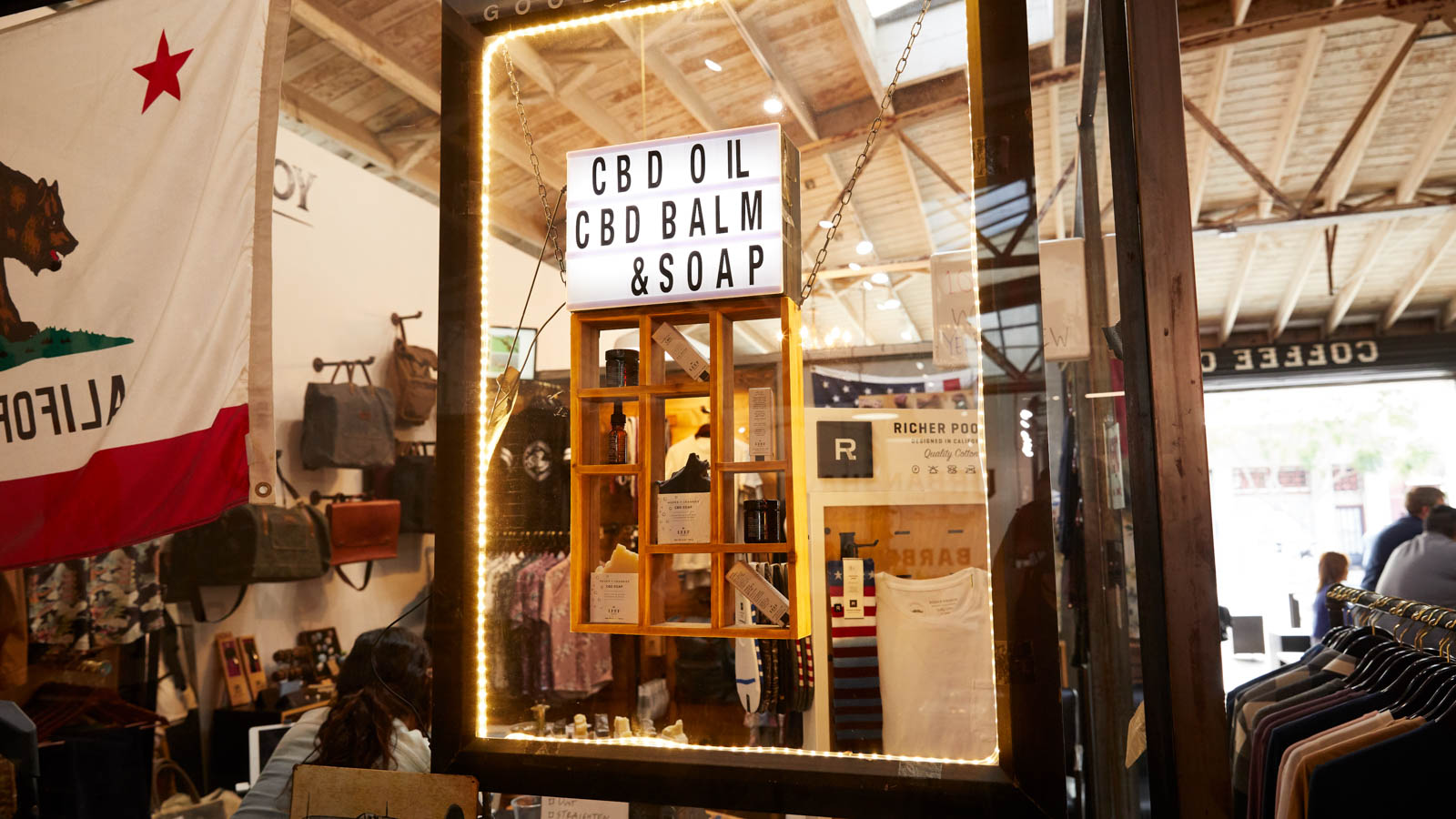
Cannabidiol (CBD) oil is one of the hottest wellness trends of 2019, with formulas popping up in nail salons, spas, big-box retailers, and health stores throughout the U.S..
Though once considered an illicit substance, the 2018 Farm Bill made industrial hemp — and thus hemp-derived CBD — legal to produce in all 50 states. You can now go ahead and order yourself a bottle of CBD oil in such unlikely places as Bed, Bath, and Beyond.
But for curious newcomers to CBD, the price might be raising some eyebrows. A 1 ounce, or 30 milliliter, bottle of CBD oil might cost anywhere from $30 to more than $200, leaving many wondering how something so small can cost so much and vary so widely. What accounts for the discrepancies and, perhaps most importantly, how much does CBD oil really cost?
Well, that’s complicated. CBD can be expensive to produce with plenty of added costs and there are multiple formulas available. Plus, the potency of a bottle can greatly affect the price, even if it’s the same size as a cheaper bottle with less CBD overall. Here’s a primer to the different types of CBD and how much you should expect to spend.
How Much Does CBD Oil Cost the Consumer?
According to Katie Stem of Peak Extracts, CBD as a bulk commodity ranges from $3-15 per gram, or a fraction of a cent to 1.5 cents per milligram. This could mean that a 1,000-milligram bottle of CBD tincture could contain $3 to $25 worth of CBD, but that wouldn’t account for production costs, materials, or labor.
Some companies might do all of this in-house, but many CBD companies turn to “white labeling,” which is when a larger manufacturer makes their products for them. The CBD companies then must apply the label and brand, market, and ship their products. Stem says this can cost around $25,000 to launch, plus a per-unit cost between $2.50 and $12.50.
“Long story short, the range is so broad, it’s hard to make a general statement about what is a ‘reasonable’ price to pay for a CBD product,” Stem said. “That said, when examining a cost analysis from a production perspective, you look at labor, materials, packaging, labels, potency/purity testing, marketing and shipping/distribution.
“In most other industries, the labor, materials, and profit are often divided into three equal portions. Given the exposure to this industry with regard to legal, regulatory, and testing standards, it stands to reason that the profit margin must be higher to accommodate potential risk. The markup may be closer to 400% rather than the 40% seen in many other packaged goods.”
There may also be significant markups on the retail side, as cannabis dispensaries are not allowed write-offs on their business expenses per Section 280E of the Internal Revenue Code.
Stem said that when she is personally trying to decide if a CBD product is a good deal, she goes straight to the source material. Is it grown organically? Is it grown domestically? She also looks for readily available certificates of analysis (COA), which must be issued by a licensed laboratory and test for potency and safety. Caliva offers an example of a COA required in California.
Stem said that those products will probably cost at least $50-60 per 1,000-milligram bottle, which comes out to 5 cents per milligram or more.
However, for most brands Weedmaps News looked at, 5 cents seemed to be the low end, while the majority cost between 10 to 15 cents per milligram of CBD and rarely exceeded 20 cents per milligram.
A few examples, using prices found in Los Angeles:
- Ignite’s Lavender CBD Drops, 1,000 mgs of CBD. Priced at $60, or about 6 cents per milligram.
- Topikal CBD’s Sublingual CBD Oil, 1,500 milligrams of CBD. Priced at $140, or about 9 cents per milligram.
- Icon Extracts’ CBD Tincture, 500 milligrams of CBD. Priced at $45, or about 9 cents per milligram. ()
- Smashed’s Homies Anxiety + CBD Capsules, 20 capsules with 20 milligrams of CBD per capsule. Priced at $40, or about 10 cents per milligram.
- Ignite’s Lavender CBD Drops, 1,000 mgs of CBD. Priced at $60, or about 6 cents per milligram.)
- El Gallo Star Anise CBD, 500 milligrams of CBD. Priced at $70, or about 14 cents per milligram.
What Types of CBD Are There?
CBD can be derived from either hemp or marijuana. Hemp contains less THC and is thus often grown for industrial purposes, such as fiber. Legally speaking, hemp in the United States must contain less than 0.3% THC. Marijuana may have various amounts of CBD and THC and is typically grown for medicinal or recreational purposes. Broadly speaking, whether CBD is extracted from hemp or marijuana, the distinctions aren’t always relevant.
“One thing I always say is that a molecule does not know its mother, so CBD is coming from cannabis or hemp, but it’s the same compound,” said Robby Flannery, Ph.D., CEO of California-based cannabis brand Dr. Robb Farms.
Dr. Robb Farms offers CBD in a variety of formulas. (Courtesy photo.)
The difference might be more relevant when comparing whole plant CBD, which can be full-spectrum or broad-spectrum, with isolate CBD. The latter results from extracting the CBD compound in its pure form, minus other cannabinoid compounds such as terpenes, which may provide flavors, aromas, or enhanced physiological or cerebral effects.
Full-spectrum, or whole plant CBD, will contain THC and all of the compounds originally contained in the plant, such as terpenes. Broad-spectrum hemp is similar to full spectrum, except that the THC is removed.
An ongoing debate in the CBD oil industry currently focuses on whether THC or other compounds are useful. Researchers have identified a synergistic interaction between the plant’s various compounds as the “ensemble effect” or entourage effect. That’s one reason some may seek out full- or broad-spectrum CBD, but there are various reasons why a person might prefer one over the other. If, for instance, you dislike the smell and/or taste of cannabis or want to avoid THC entirely, you might choose to stick to isolate.
Flannery notes that “cannabis tends to be a little more resinous, so the entourage effect and ensemble effect that you would be able to achieve [by] including some of those other cannabinoids is more profound. But if you’re just consuming an isolate product, it does not matter [which plant] it comes from.”
Whether you end up purchasing hemp-derived or marijuana-derived CBD might actually depend more on where you live than preference. With the passage of the Farm Bill, hemp-derived CBD is legal throughout the U.S., while cannabis-derived CBD will be available only to consumers in adult-use states or to patients in states that allow medical cannabis. Cannabis-derived CBD is likely to cost a bit more because hemp is less costly to produce.
Many medical marijuana and CBD isolate consumers prefer an edible such as a gummie to receive their dose of cannabinoids. (Photo by Gina Coleman/Weedmaps News)
Is CBD Oil Lab Tested?
Third-party lab testing ensures the product is safe and correctly measured. A licensed lab will make sure a product’s potency is accurate, meaning you’re actually getting the amount of CBD or THC you’re paying for, or alternatively, that the THC content is zero for those who want to avoid any possible intoxicating effects or drug-testing surprises. These tests also will analyze moisture content and screen for pesticides, mold, fungus, and residual solvents — chemicals that may remain after the extraction process).
How do you know you’re getting a lab-tested product? If a company lists its certificates of analysis on its website and packaging, shoppers can usually be assured the product has been lab tested.
“If you are a cannabis consumer and you go to a licensed retailer, you are close to 100% certain that all of that product has been tested by a third-party lab and it passed very stringent restrictions and regulations,” Flannery said.
Testing can get pricey, especially in a state such as California, where testing regulations implemented in late 2018 increased costs as much as 40-55% for some manufacturers, according to MJBizDaily. Flannery estimated testing can cost a company between $100 to $400 per sample, and they may have to test several samples. Those that produce flower — from which the oil is derived — have to test incrementally, such as every 55 pounds.
“If you’re a large farm, that’s a lot of testing,” Flannery said. “I know some groups who are spending in the seven-figure range on testing on an annual basis.”
All of these costs are shouldered by the manufacturer and ultimately raise the prices overall.
How Do You Read the Labels on CBD?
The label on any CBD product will tell you several important details. Perhaps the most obvious detail is the name of the company, which you may want to research so you can read reviews of the brand, most available on Weedmaps, or the individual product. Or, you might want to visit the company website’s FAQ page for additional product information.
The label will also tell you how many milligrams of CBD the product contains. This number may be the total amount or how many milligrams are in each serving.
Topicals and oils usually list the total amount of CBD. Balms, lotions, and other topicals are products you’re likely rubbing into your skin and therefore, you might not be concerned about measuring out a particular dosage.
With oils and tinctures that you’ll be ingesting, you may wish to find out how much CBD is in each serving. To do that, you’ll need to determine the milligrams of CBD within the net weight of the product. So if you have a bottle that contains 30 milliliters (about 1 fluid ounce) of liquid and 500 milligrams of CBD (500/30), that’s about 16.6 milligrams per milliliter. It takes about 20 drops to get to one milliliter.
If your product is some kind of edible — chocolate, candy, etc. — or capsule, you may find that the package lists how many milligrams of CBD are in individual items. If a bottle of capsules says that each capsule contains 30 milligrams of CBD and there are 30 capsules in the bottle, that would be 900 total milligrams of CBD.
If the product contains THC, the label will tell you that as well. It may tell you the ratio of THC to CBD, such as 18:1, which would be a particularly CBD-rich product, or 1:1, which would be more balanced.
The package will also specify whether the product contains full-spectrum, whole plant, or isolate CBD, as previously mentioned. And, like any other product, the label will list what else is in it (coconut or medium-chain triglyceride (MCT) oil derived from coconuts are common carrier oils), where it was made, and how it ought to be stored.
Will CBD Ever Cost Less?
According to Flannery, yes, the price of CBD will come down, but not for a few years.
“I think the primary driver behind [the cost] is just the regulatory environment that we’ve lived in for so long has limited the amount of production we can do,” he said.
Flannery noted it takes time to put together the capital expenditures and build out the infrastructure required. A new hemp farm requires a minimum of two months to produce any crop and in many places, the Farm Bill marked the first time it was allowed. Plus, testing regulations are often much stricter when it comes to CBD and cannabis than to similar herbal supplements or oils.
“CBD is never going to be, in my opinion, as cheap as any off-the-shelf pharmaceutical or herbal supplements, but prices are still going to be going down,” Flannery said. That cost savings may result, he said, when lawmakers begin to understand that cannabis is not, as consumers have been told for 80 years, “the devil’s lettuce we were told it was.”
Feature image: CBD oil is for sale seemingly everywhere and at many different prices. (Photo by Gina Coleman/Weedmaps News)


